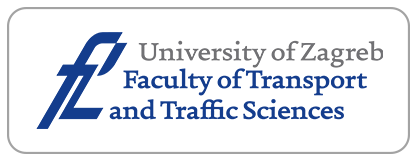A Mixed Method Approach for Modelling Entry Capacity at Rotary Intersections

Downloads
Rotary intersections, known as old traffic circles, require vehicles entering from branches to yield to circulating traffic. Upon entering, vehicles travel around a central island and exit toward their desired branch, generating merging and diverging conflicts at entry and exit points. Rotary capacity models are focused on the weaving manoeuvres within the circular roadway sections, associating capacity with the maximum traffic flow rate of each weaving segment. This paper introduces a novel approach combining modern roundabouts capacity models with the old rotary ones. In particular, the present study proposes a mixed approach based on an iterative process that combines the English TRRL model, which is suited for the old rotaries and based on short weaving sections capacity, with the features of the HCM-7th entry capacity model of the modern roundabouts, which is based on the circulating-traffic priority rule. Such an approach is rooted in the total capacity criteria and traffic conditions where all roundabout entrances reach congestion simultaneously. Compared to the past, this new approach makes entry performance estimation, such as average delay and queue length, bridging the gap between outdated and current methodologies in the field of rotary intersection design and assessment.
Downloads
Waddell E. Evolution of Roundabout Technology: A History-Based Literature Review. Computer Science. 1997.
Jimoh YA, Itiola IO, Adeleke OO. Traffic performance analysis and cost comparison of data collection methods for an urban rotary. International Journal of Traffic and Transportation Engineering. 2014;3(5):222-231. DOI: 10.5923/j.ijtte.20140305.03.
Ashford R, Field JC. The capacity of rotary intersections. Journal of Institution of Highway Engineers. 1973;20(3):14-21.
Pratelli A, Sechi P, Souleyrette RR. Upgrading traffic circles to modern roundabouts to improve safety and efficiency – case studies from Italy. Promet – Traffic&Transportation. 2018;30(2):217-229. DOI: 10.7307/ptt.v30i2.2571.
Italian Ministry of Infrastructures & Transport. [Norme funzionali e geometriche per la costruzione delle intersezioni stradali]. D.M. n. 1699 of 10/4/2006, Rome, 2006.
USAID. Conducting Mixed-Method Evaluations. Technical Note, Version 1, 2013.
Wu N, Brilon W. Total capacity of roundabouts analyzed by a conflict technique. Transportation Research Record. 2018;2672(15):9-22. DOI: 10.1177/0361198118788171.
Almeida F. Strategies to perform a mixed methods study. European Journal of Education Studies. 2018;5(1):137-151. DOI: 10.5281/zenodo.1406214.
ITE. Transportation and Traffic Engineering Handbook. W.S. Homburger (ed.), Prentice-Hall, New Jersey, 1982.
Ahmad A, Mahesh S, Rastogi R. Selection of roundabout entry capacity model for Indian condition. Urban Transport Journal. 2014;13(1):79-87.
TRB. Highway capacity manual 7th edition: A guide for multimodal mobility analysis. Washington, D.C.: The National, 2022. DOI: 10.17226/26432.
FHWA. Highway capacity manual reference guide. U.S. Department of Transportation, 2022.
Pratelli A, Brocchini L, Francesconi N. Estimating and updating gap acceptance parameters for HCM6th roundabout capacity model applications. WIT Transactions on Ecology and the Environment. 2021;253:477-486. DOI: 10.2495/SC210391.
Pratelli A, Souleyrette RR, Brocchini L. Two-geometry roundabouts: Design principles. Transportation Research Procedia. 2022;64:299-307. DOI: 10.1016/j.trpro.2022.09.034.
Pratelli A, Brocchini L. Two-geometry roundabouts: Estimation of capacity. Transportation Research Procedia. 2022;64:232-239. DOI: 10.1016/j.trpro.2022.09.028.
Kimber RM. The traffic capacity of roundabouts. TRRL LR942 Monograph. 1980.
Troutbeck RJ. Capacity and delays at roundabouts - A literature review. Transportation Research Board. 1985.
Copyright (c) 2025 Antonio PRATELLI, Lorenzo BROCCHINI, Reginald Roy SOULEYRETTE, Teng WANG

This work is licensed under a Creative Commons Attribution-NonCommercial 4.0 International License.



















